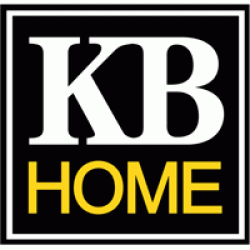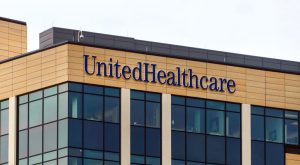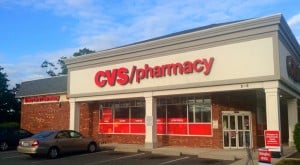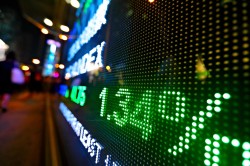&l;p&g;&l;img class=&q;size-large wp-image-865&q; src=&q;http://blogs-images.forbes.com/moneyshow/files/2019/02/shutterstock_343993928-1200x800.jpg?width=960&q; alt=&q;&q; data-height=&q;800&q; data-width=&q;1200&q;&g; Gold bars on nugget grains background. (Photo by Shutterstock)
&l;em&g;After lackluster returns in recent years, gold is finally showing signs of life, according to several leading newsletter advisors and contributors to &l;span&g;&l;strong&g;&l;a href=&q;https://www.moneyshow.com/&q; target=&q;_blank&q;&g;MoneyShow.com&l;/a&g;&l;/strong&g;&l;/span&g;. Here are some favorite precious metals ideas for investors seeking to add some glitter to a diversified portfolio . &l;/em&g;
&a;nbsp;
&l;span&g;&l;strong&g;&l;a href=&q;https://www.moneyshow.com/expert/0b63c4125cbd49a583c12eee90fe9dc9/nick-hodge/&q; target=&q;_blank&q;&g;Nick Hodge&l;/a&g;&l;/strong&g;&l;/span&g;, &l;span&g;&l;strong&g;&l;a href=&q;https://www.outsiderclub.com/pubs-detailed/lmp&q; target=&q;_blank&q;&g;Wall Street&s;s Underground Profits&l;/a&g;&l;/strong&g;&l;/span&g;
Most major gold mining stocks are down 50% or more in the past 10 years. But one company is up more than 30% over that time &a;mdash; &l;strong&g;Franco-Nevada&l;/strong&g;. And it&a;rsquo;s because of the way it operates. It doesn&a;rsquo;t own, operate, develop, or explore for gold mines. Instead, it owns a large portfolio of royalties and streams on some of the best gold mining projects in the world.
For example, Franco-Nevada bought a 2%-4% net smelter return (NSR) royalty and a 2.6%-6% net profit interest (NPI) royalty on Goldstrike &a;mdash; the largest gold mine in North America, owned and operated by Barrick. From those alone Franco-Nevada generates around $20 million in revenue annually.
It owns hundreds of royalties on projects in various development and production stages and various geographic locales, including more that you&a;rsquo;ll recognize. Franco Nevada has a deal to receive 6% of production from the Sabodala mine. That mine is owned and operated by Teranga Gold, which is a recommendation of this publication.
The company also owns a 1.7% NSR on future production from the Stibnite mine in Idaho. This project is owned by Midas Gold, which happens to be one of our top recommendations. In total, it has 211 deals in the precious metals space, 84 &a;ldquo;other&a;rdquo; mining deals, and 82 in the oil and gas space.
You also get a bit of diversification because around 7% of the company&a;rsquo;s revenue comes from oil and gas deals. That&a;rsquo;s not a bad place to be with America&a;rsquo;s shale basins now cranking out record barrels. In fact, Franco estimates 2018 revenue from oil and gas will be upwards of $75 million, well above the $47 million generated in 2017.
Guidance for 2022 is a 17% increase in gold equivalent ounces sold per year from 2017 and a 155% increase in oil and gas revenues. Mining would still be over 85% of the business.
And you also get a dividend. It&a;rsquo;s 1.55% annually at last check. I like the timing at this point in the cycle, with Franco-Nevada stock trading at the same price it was in 2012. I like the commodity and geographic diversification. I also like the oil and gas kicker.
&l;span&g;&l;strong&g;&l;a href=&q;https://www.moneyshow.com/expert/4f9b32b16b874743afcb0b50ffa3cb69/brien-lundin/&q; target=&q;_blank&q;&g;Brien Lundin&l;/a&g;&l;/strong&g;&l;/span&g;&l;strong&g;, &l;/strong&g;&l;span&g;&l;strong&g;&l;a href=&q;https://goldnewsletter.com/&q; target=&q;_blank&q;&g;Gold Newsletter&l;/a&g;&l;/strong&g;&l;/span&g;
Both the technical and the fundamental situations are now firmly in favor of gold. This is good, and there&a;rsquo;s more to come. It&a;rsquo;s good news that gold has put some distance between it and $1,300. It&a;rsquo;s not uncommon for the metal to drop back below big number levels before clearing them for good.
There are some relatively minor resistance levels just ahead, but the big target is the $1,372 level that represents the 2016 high. That&a;rsquo;s relatively close to the really big target of $1,400.
There&a;rsquo;s little technical resistance above that big number before we get to the all-time nominal highs around $1,800-$1,900. So if gold gets above $1,400, we&a;rsquo;ll see massive buying coming in from generalist funds and traders.
&l;strong&g;SSR Mining&l;/strong&g; &a;mdash; a Vancouver-based mining company &a;mdash; released its full-year production numbers a couple of weeks back, and the results outlined another stellar year in 2018. The firm&s;s mines produced 345,000 gold-equivalent ounces for the full year and 88,000 gold equivalent ounces during Q4 2018.
Those numbers were supported by Marigold &a;mdash; a mining operation in Nevada. The company&a;rsquo;s Seabee operation in Saskatchewan hit its highest production total in its history. For 2019, the company is forecasting 395,000 gold-equivalent ounces of production at cash costs of $700 per ounce.
I had the chance to meet recently with a member of the SSR management team, who pointed out how the company has demonstrated greater leverage to gold and silver prices than most, if not all, of its peer group.
Why? Well, for one, Marigold is a low-grade deposit that provides excellent leverage. The mine&a;rsquo;s Red Dot deposit contains around one million ounces of measured and indicated resource not currently classified as reserves. At $1,400/ounce, this mineralization becomes economic.
Another levered asset is the company&a;rsquo;s Pitarrilla project in Mexico. Pitarrilla is one of the largest undeveloped silver projects in the world, with a measured and indicated resource of 500 million ounces of silver. Pitarrilla effectively acts like an out-of-the-&l;a href=&s;http://www.forbes.com/money/&s;&g;money&l;/a&g; call option on silver, one that will provide huge leverage on a big rise in silver prices.
SSR Mining is a great option for any gold or silver bug looking to anchor their junior portfolio with a solid producer. It&a;rsquo;s a buy at current levels.
&l;strong&g;&a;nbsp;&l;/strong&g;
&l;span&g;&l;strong&g;&l;a href=&q;https://www.moneyshow.com/expert/d3405d25c2744312b817d863232f20e3/jim-woods/&q; target=&q;_blank&q;&g;Jim Woods&l;/a&g;&l;/strong&g;&l;/span&g;&l;strong&g; and &l;span&g;&l;a href=&q;https://www.moneyshow.com/expert/798spk/mark-skousen/&q; target=&q;_blank&q;&g;Mark Skousen&l;/a&g;&l;/span&g;, &l;span&g;&l;a href=&q;https://www.markskousen.com/offer/fma-promo-web/&q; target=&q;_blank&q;&g;Fast Money Alert&l;/a&g;&l;/span&g;&l;/strong&g;
We think it is time to get back into precious metals, in particular,&a;nbsp;&l;strong&g;Hecla Mining&l;/strong&g;,&a;nbsp;the oldest precious metals firm in the United States and famous for its &a;ldquo;Lucky Silver&a;rdquo; mine in Coeur d&a;rsquo;Alene, Idaho.&a;nbsp;It&a;rsquo;s the country&a;rsquo;s largest silver mining company, founded in 1891.
Hecla is selling near an all-time low, way below book value, and has been losing money for years.&a;nbsp;The stock hit a high of $30 a share in 1980 &a;mdash; nearly 40 years ago.&a;nbsp;Back then, silver hit $50 an ounce; but since Ronald Reagan was elected, it has been all downhill.&a;nbsp;Hecla has lost 74% of its value during this time, with occasional bear-market rallies.
But things are finally looking up for Hecla. Hecla Mining, the oldest NYSE-listed precious metals company in North America, announced an incredible achievement &a;mdash; record assets in silver and gold due to acquisitions&a;nbsp;in Canada, Alaska, Nevada and Mexico in recent years. Let&a;rsquo;s buy&a;nbsp;Hecla Mining at market and set a protective stop of $2.30 a share.
&l;span&g;&l;strong&g;&l;a href=&q;https://www.moneyshow.com/expert/abb595dc811b4abc8914d2d857cf52ea/michael-cintolo/&q; target=&q;_blank&q;&g;Mike Cintolo&l;/a&g;&l;/strong&g;&l;/span&g;&l;strong&g;, &l;span&g;&l;a href=&q;https://cabotwealth.com/premium-services/cabot-top-ten-trader/&q; target=&q;_blank&q;&g;Cabot Top Ten Trader&l;/a&g;&l;/span&g;&l;/strong&g;
With the stock market in a solid uptrend and showing great breadth and leadership, you wouldn&a;rsquo;t normally expect gold stocks to be thriving, too. But they are, and &l;strong&g;Kirkland Lake Gold&l;/strong&g; looks like the hands-down leader in the group. (That&a;rsquo;s one advantage of our system, which looks for where the big money is flowing, no matter where it may be.
Kirkland Lake has five mines in operation, though one in Australia (Fosterville) and another in Toronto (Macassa) are the two big drivers, making up 82% of Kirkland&a;rsquo;s 2018 production levels.&a;nbsp; And, unlike many miners whose prospects rise and fall solely with the price of gold, Kirkland has a solid growth outlook.
Output rose 21% last year thanks mainly to those two mines, and that should continue, with Fosterville output expected to soar 70% by 2021 with much higher (and usually higher-priced) grades as well (thanks in part to the new Swan Zone deposit there), and Macassa&a;rsquo;s growth is expected to kick into gear in 2022.
All told, Kirkland sees company-wide output lifting about 10% annually through 2021 and more beyond that, and while exploration spending is likely to rise this year, the company&a;rsquo;s growing production is helping the bottom line &a;mdash; free cash flow rose 29% last year, and analysts see the bottom line rising 16% this year, which should prove conservative should gold prices remain strong. For a gold stock, Kirkland has a very solid story.
Technically, the stock has actually been advancing in recent years despite poor action from the gold sector, and that trend has accelerated since November (before the broad market bottomed).
In fact, Kirkland has been one of the best performers out there, rallying 12 of 13 weeks and soaring to new highs. It&a;rsquo;s not at an ideal buy point here, but we like the good volume and persistency seen in the advance. Look for a shakeout to enter.
&l;span&g;&l;/span&g;
&l;span&g;&l;strong&g;&l;a href=&q;https://www.moneyshow.com/expert/0771d13715834ed89a177b2826bac669/george-putnam/&q; target=&q;_blank&q;&g;George Putnam&l;/a&g;&l;/strong&g;&l;/span&g;&l;strong&g;, &l;span&g;&l;a href=&q;https://esp.forbes.com/subscribe?PC=T4&q; target=&q;_blank&q;&g;The Turnaround Letter&l;/a&g;&l;/span&g;&l;/strong&g;
&l;strong&g;Barrick Gold&l;/strong&g; is the world&a;rsquo;s largest gold mining company. The company grew by acquisition, including the hugely successful Goldstrike mine deal in 1986, Homestake Mining in 2001 and the acquisition of Placer Dome in 2006.
Following the sharp gold price decline in 2013, Barrick moved board member John Thornton into the executive chairman role. Thornton brought much-needed financial discipline to Barrick, slashing its weighty $13&a;nbsp;billion in debt to its recent $5.7 billion.
However, the reduction was largely funded by mine sales and cuts in capital spending, and investors worried about the company&a;rsquo;s long-term viability under this financially driven strategy.
Barrick&a;rsquo;s outlook turned much brighter with its just-completed $6 billion all-stock acquisition of Randgold, an Africa-focused gold mining company. Not only does this add Randgold&a;rsquo;s debt-free balance sheet and numerous valuable mines to Barrick, the deal brings its CEO Mark Bristow, a South African-born executive widely regarded as one of the gold industry&a;rsquo;s best managers.
The combined company holds five of the world&a;rsquo;s top ten &a;ldquo;Tier One&a;rdquo; mines, located in the United States, Democratic Republic of the Congo, Mali and the Dominican Republic.&a;nbsp;&a;#8232;&a;#8232;Change has started at Barrick;&a;nbsp; it has already reined in its unsuccessful technology initiatives and laid off half of its nearly 200 headquarters staff.
Like all mergers, this one carries risks, particularly those related to integrating the two companies. Also, much of its production is in countries where governments yearn for access to Barrick&a;rsquo;s highly valuable assets. In addition, its short-term share price will fluctuate with the price of gold.&a;nbsp;Longer term, the changes at Barrick should meaningfully boost its earnings power and valuation.
The company&a;rsquo;s positive cash flow, combined with its investment grade balance sheet that has almost no debt due for nearly 14 years, provides Barrick the time needed for a turnaround. Our thesis assumes no change in the price of gold, although the dwindling supply of attractive new gold resources, along with an industry-wide decline in reserves, should be at least supportive of the current price level.
With its new leadership and strong earnings improvement potential, backed by its healthy balance sheet, Barrick&a;rsquo;s shares look ready to shine.&a;nbsp;We recommend the purchase of shares of Barrick Gold up to $20.&a;nbsp;(&l;em&g;Disclosure: An employee of the publisher of The Turnaround Letter owns Barrick Gold stock.)&l;/em&g;&l;/p&g;
 Wall Street brokerages predict that KB Home (NYSE:KBH) will post $0.26 earnings per share (EPS) for the current fiscal quarter, Zacks Investment Research reports. Six analysts have made estimates for KB Home’s earnings. The highest EPS estimate is $0.32 and the lowest is $0.21. KB Home posted earnings of $0.40 per share in the same quarter last year, which would suggest a negative year over year growth rate of 35%. The firm is expected to issue its next earnings results on Thursday, March 28th.
Wall Street brokerages predict that KB Home (NYSE:KBH) will post $0.26 earnings per share (EPS) for the current fiscal quarter, Zacks Investment Research reports. Six analysts have made estimates for KB Home’s earnings. The highest EPS estimate is $0.32 and the lowest is $0.21. KB Home posted earnings of $0.40 per share in the same quarter last year, which would suggest a negative year over year growth rate of 35%. The firm is expected to issue its next earnings results on Thursday, March 28th.
 Source: Shutterstock
Source: Shutterstock  Source: Shutterstock
Source: Shutterstock  Source: Mike Mozart via Flickr
Source: Mike Mozart via Flickr  Source: Shutterstock
Source: Shutterstock  Traders sold shares of iShares Barclays Aggregate Bond Fund (BMV:AGG) on strength during trading hours on Tuesday. $61.90 million flowed into the stock on the tick-up and $241.51 million flowed out of the stock on the tick-down, for a money net flow of $179.61 million out of the stock. Of all stocks tracked, iShares Barclays Aggregate Bond Fund had the 2nd highest net out-flow for the day. iShares Barclays Aggregate Bond Fund traded up $0.12 for the day and closed at $107.49
Traders sold shares of iShares Barclays Aggregate Bond Fund (BMV:AGG) on strength during trading hours on Tuesday. $61.90 million flowed into the stock on the tick-up and $241.51 million flowed out of the stock on the tick-down, for a money net flow of $179.61 million out of the stock. Of all stocks tracked, iShares Barclays Aggregate Bond Fund had the 2nd highest net out-flow for the day. iShares Barclays Aggregate Bond Fund traded up $0.12 for the day and closed at $107.49